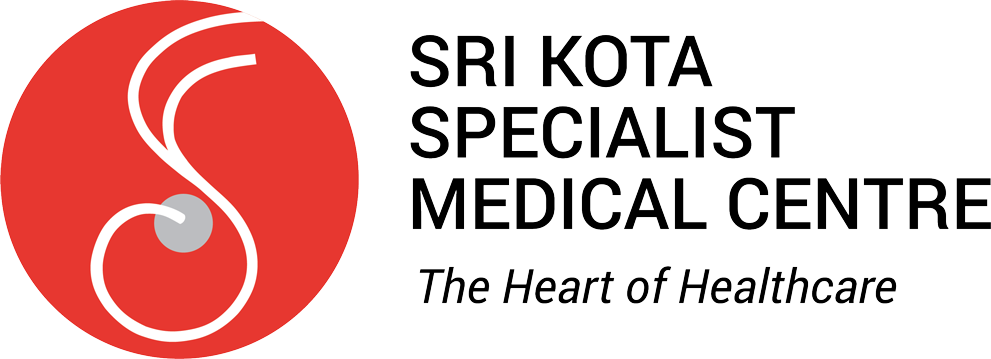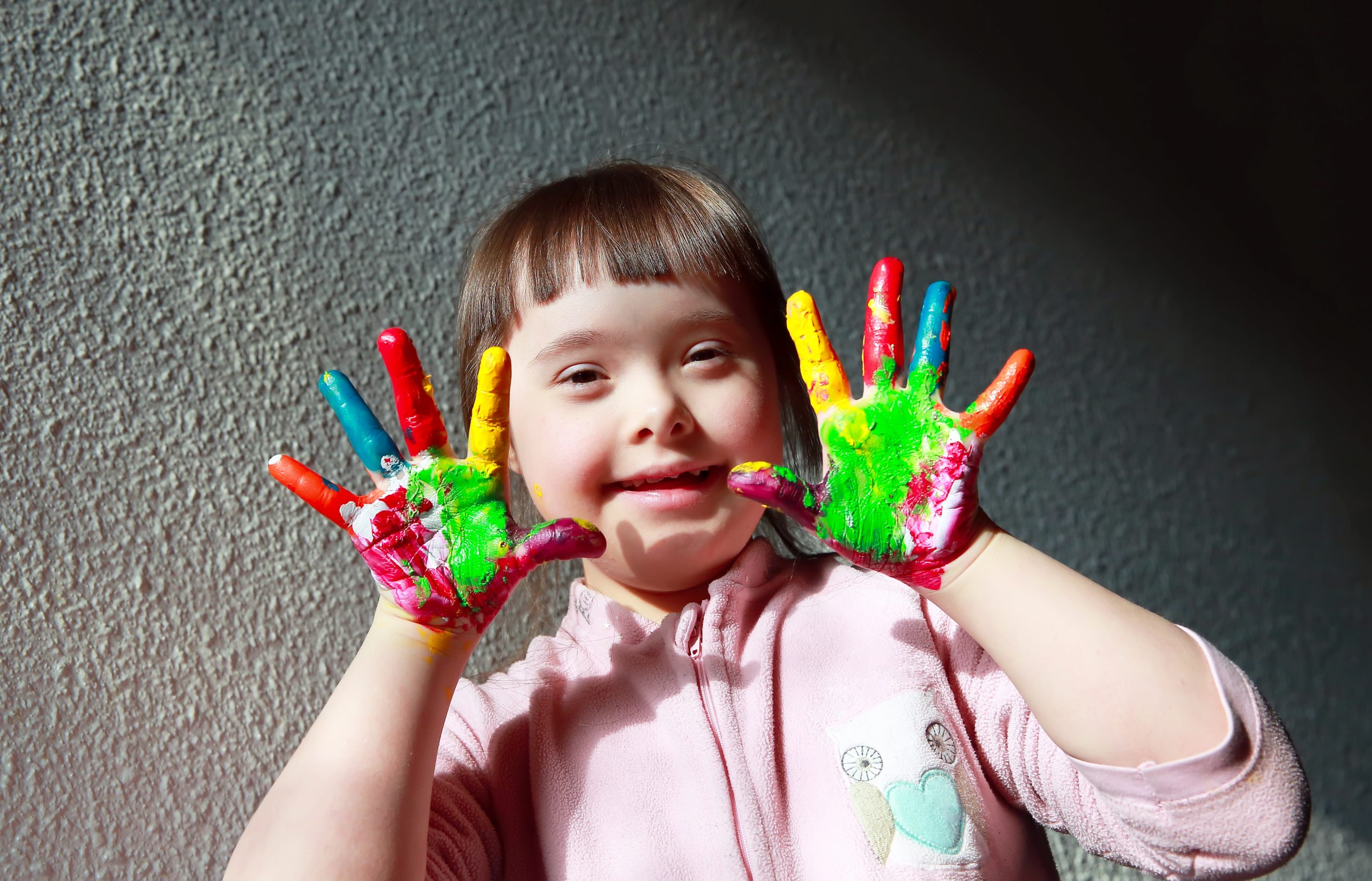Children with Down Syndrome
Early signs of down syndrome in infants.
Down syndrome is a genetic disorder caused when abnormal cell division results in an extra full or partial copy of chromosome 21. This extra genetic material causes the developmental changes and physical features of Down syndrome
Physical symptoms:-
For facial features, they may have:
- Eyes shaped like almonds, upward slanting eyes, often with a skin fold that comes out from the upper eyelid and covers the inner corner of the eye
- Flatter facial features, especially the nose
- Small ears, which may fold over a bit at the top
- Tiny white spots in the colored part of their eyes (called Brushfield spots)
- A tongue that sticks out of the mouth
They may have small hands and feet with:
- A single, deep crease that runs across the palm of the hand
- Short and stubby fingers
- Small pinkies that curve toward the thumbs
- A deep grove between first and second toes
They may also have:
- Low muscle tone
- Loose joints, making them very flexible
- Short height, both as children and adults
- Short neck
- Small head
At birth, babies with Down syndrome are often the same size as other babies, but they tend to grow more slowly because they often have less muscle tone, they may seem floppy and have trouble holding their heads up, this usually gets better with time. Low muscle tone can also mean babies have a hard time sucking and feeding, which can affect their weight.
Physical development in children with Down syndrome is often slower than development of children without Down syndrome. For example, because of poor muscle tone, a child with Down syndrome may be slow to learn to turn over, sit, stand, and walk. It may take children with Down syndrome longer than other children to reach developmental milestones, but they will eventually meet many of these milestones.
Intellectual and Developmental Symptoms
Cognitive impairment, problems with thinking and learning, is common in people with Down syndrome and usually ranges from mild to moderate. Only rarely is Down syndrome associated with severe cognitive impairment.
Other common cognitive and behavioral problems may include
- Short attention span
- Poor judgment
- Impulsive behavior
- Slow learning
- Delayed language and speech development
People with Down syndrome can have a variety of complications, some of which become more prominent as they get older. These complications can include:
- Heart defects.
- Gastrointestinal (GI) defects.
- Immune disorders.
- Sleep apnea.
- Spinal problems.
- Other health issues such as endocrine, dental, seizures, ear infections, hearing and vision problems.
Three Different Types of Down Syndrome :
All forms of Down syndrome are associated with an extra full or partial 21st chromosome, there are a few different types of the condition. Those types are :-
I) Trisomy 21 Down syndrome: The most common form of Down syndrome — accounting for roughly 95 percent of all cases. The condition stems from an error in cell division known as “nondisjunction.” At some point leading up to or at conception, in either the sperm or the egg, one of the parents’ pairs of 21st chromosomes failed to separate. So instead of getting one chromosome each from the mother and father, the embryo’s DNA ends up with an extra chromosome in the 21st pair. As the embryo matures and its cells continue to replicate, the extra copy of that 21st chromosome is replicated over and over in every cell.
II) Translocation Down syndrome: Translocation Down syndrome results when an extra full or partial copy of the 21st chromosome is present —just like in trisomy21. However, in these individuals, the extra full or partial 21st chromosome is attached to one of the other 23 chromosomes. So a person with translocation Down syndrome has the usual 46 chromosomes, but one of them is bound to an additional copy of the 21st (only 3 to 4 percent of Down syndrome patients have this type).
III) Mosaic Down syndrome: For those with mosaic Down syndrome (also called “mosaicism”), some, but not all of their cells contain an extra copy of the 21st chromosome. This is the rarest type of Down syndrome, accounting for 1 to 2 percent of cases, and people with this type may have fewer or less-severe symptoms than those with the two more common types of Down syndrome
Causes for down syndrome in babies.
Not much is known about why some children are born with Down Syndrome and others are not. There is no specific race or economic background where it is more common. Although Down Syndrome occurs at the genetic level, it is not necessarily hereditary; you will not usually see family background that predicts its occurrence.
Down syndrome is a condition in which a child is born with an extra copy of their 21st chromosome
In all cases of reproduction, both parents pass their genes on to their children. These genes are carried in chromosomes. When the baby’s cells develop, each cell is supposed to receive 23 pairs of chromosomes, for 46 chromosomes total. Half of the chromosomes are from the mother, and half are from the father.
In children with Down syndrome, one of the chromosomes doesn’t separate properly. The baby ends up with three copies, or an extra partial copy of chromosome 21, instead of two. This extra chromosome causes problems as the brain and physical features develop.
Some parents have a greater risk of having a baby with Down syndrome. Risk factors include:
- Advancing maternal age. A woman’s chances of giving birth to a child with Down syndrome increases with age because older eggs have a greater risk of improper chromosome division. A woman’s risk of conceiving a child with Down syndrome increases after 35 years of age. However, most children with Down syndrome are born to women under age 35 because younger women have far more babies.
- Being carriers of the genetic translocation for Down syndrome. Both men and women can pass the genetic translocation for Down syndrome on to their children.
There is controversy about the influence of the father’s age. Most researchers consider that the father’s age does not appear to affect the chance of having a child with Down’s syndrome
Could a pregnant mom’s action cause Down syndrome in her baby?
Down syndrome is not a genetic disorder than can be traced to one’s family medical history. Down syndrome has not been linked to behavioral habits or environmental conditions in or out of the womb.
Could Down syndrome be inherited from either parent?
Most of the time, Down syndrome isn’t inherited. It’s caused by a mistake in cell division during early development of the fetus.
Translocation Down syndrome can be passed from parent to child. However, only about 3 to 4 percent of children with Down syndrome have translocation and only some of them inherit it from one of their parents.
When balanced translocations are inherited, the mother or father has some rearranged genetic material from chromosome 21 on another chromosome, but no extra genetic material. This means he or she has no signs or symptoms of Down syndrome, but can pass an unbalanced translocation on to children, causing Down syndrome in the children.
What can parents do to help their baby with Down syndrome to grow up the best way possible?
When you first learn that your baby has Down syndrome, you may feel disappointment, grief, anger, frustration, fear, and anxiety about the future. These feelings are all normal. Talking to other parents of children who have Down syndrome can be helpful. They know how you’re feeling. You also can talk to your family doctor or visit a support group. These resources let you share your feelings and get additional information. Many local communities have support groups for families
But as with any other child, your love and stimulation are the most important influences on your child’s development. Children learn the most from the people who care for them and with whom they spend most of their time, so everyday play and communication can help your child a lot.
You can expect that the key milestones – like walking, talking and crawling – will probably be slower to come for your child with Down syndrome.
Although there’s no cure for Down syndrome, early intervention can make a difference.
The team of professionals involved in supporting you and your child might include paediatricians, physiotherapists, occupational therapists, speech pathologists, special education teachers and psychologists.
Rehabilitation plays a major role in the management of children with Down syndrome in Malaysia which includes
1) Early intervention programme
2) Occupational therapy – to improve motor skills, such as using the hands and other parts of the body, and help children deal with sensory inputs from the environment
3) Physiotherapy – to increase mobility and muscle strength and help children to work within functional limitations
4)Speech therapy – to help improve communication skills and self-expression
4)Special education and behavioral therapy focused on managing emotional and behavioral problems
5)Special skills training
The aim of rehabilitation is to help the child achieve his/her maximum developmental potential and learn to be self-independent. Rehabilitation programmes are available in community-based rehabilitation centres and facilities run by NGOs/voluntary organizations. Details of available local resources can be obtained from the relevant local departments: hospital (Paediatric department), health centre, social welfare branch office, or education department (special education unit)
The child should be registered as early as possible with the state Social Welfare and Education Department so as to receive proper health, welfare and special education benefits. The attending doctor can assist in the registration process by filling in the relevant forms.
After being registered, the child is entitled to receive benefits with regards to medical treatment from government health facilities and enrolment in schools with special education classes. Other benefits include tax relief/rebate, incentive allowance when studying or employed, transportation concessions, immigration fee waiver and extended pensions payment. Futher information can be obtained from the relevant departments.
Support groups available in Malaysia
- Kiwanis Down Syndrome Foundation
- Persatuan Sindrom Down Malaysia
Article by Dr.Diana Osman, Consultant Paediatrician

